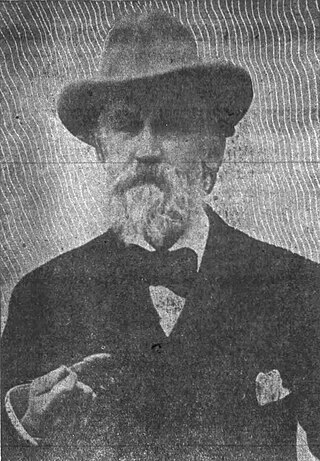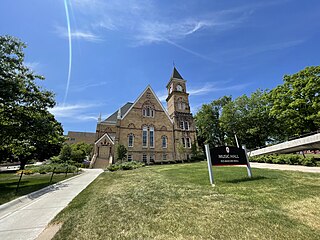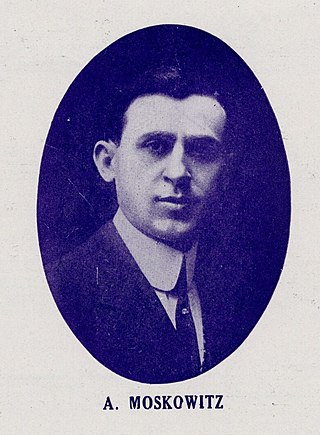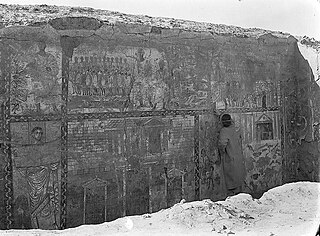
Aldo Leopold was an American writer, philosopher, naturalist, scientist, ecologist, forester, conservationist, and environmentalist. He was a professor at the University of Wisconsin and is best known for his book A Sand County Almanac (1949), which has been translated into fourteen languages and has sold more than two million copies.
The Wisconsin State University Conference (WSUC) was an American intercollegiate college athletic conference that was formed in July 1913 as the Wisconsin State Normal Conference. All member institutions were located in the State of Wisconsin. The WSUC sponsored competitions and championships in basketball, football, and other sports.

The University of Wisconsin–Stevens Point is a public university in Stevens Point, Wisconsin. Established in 1894, it is part of the University of Wisconsin System. UW-Stevens Point grants associate, baccalaureate, and master's degrees, as well as doctoral degrees in audiology, educational sustainability, and physical therapy. In 2018, UW-Stevens Point merged with UW-Stevens Point at Wausau and UW-Stevens Point at Marshfield. The 406-acre (164 ha) main campus includes the 280-acre (113 ha) Schmeeckle Reserve on the north side of the Campus. There are 15 academic buildings, and 13 Residence Halls.
Savas Papapolitis was a Greek politician.
Inventoried Roadless Areas are a group of United States Forest Service lands that have been identified by government reviews as lands without existing roads that could be suitable for roadless area conservation as wilderness or other non-standard protections. The Inventoried Roadless areas include approximately 60,000,000 acres (240,000 km2) of land in 40 states and Puerto Rico. Most of these lands are in the western portion of the lower 48 states and Alaska. Idaho alone contains over 9 million acres (36,000 km2) of inventoried roadless areas. The inventoried roadless areas range from large areas with wilderness characteristics to small tracts of land that are immediately adjacent to wilderness areas, parks and other protected lands.
Gordon MacQuarrie was an American writer and journalist. Born in Superior, Wisconsin, he is best known for his short stories involving hunting and fishing, and for his semi-fictional organization known as The Old Duck Hunters' Association, Inc.(ODHA, Inc.) He died unexpectedly in Milwaukee, Wisconsin of a heart attack.

The Wisconsin School of Business (WSB) is the business school of the University of Wisconsin–Madison, a public research university in Madison, Wisconsin and consistently ranks among the top business schools in the world. Founded in 1900, it has more than 46,000 living alumni across nearly 90 countries. The undergraduate program prepares students for business careers, offering 11 different majors, while its Master of Business Administration (MBA) program is based on focused career specializations, and its PhD program prepares students for careers in academia. The school offers student services, such as Accenture Leadership Center, The Huber Business Analytics Lab and International Programs. In the 2019 U.S. News & World Report rankings, the Wisconsin School of Business's undergraduate program was ranked 18th overall among business schools. The University of Wisconsin-Madison currently has the most Fortune 500 CEOs alumni of any school in the world, with 14.
The Hollow Tree and Deep Woods Book is a children's book of short stories by Albert Bigelow Paine. It was published first in 1898 as an edition in one volume of The Hollow Tree and In the Deep Woods with several new stories and pictures added.

The University of Wisconsin–Madison College of Agricultural and Life Sciences is one of the colleges of the University of Wisconsin–Madison. Founded in 1889, the college has 17 academic departments, 23 undergraduate majors, and 49 graduate programs.

The University of Wisconsin–Madison is a public land-grant research university in Madison, Wisconsin, United States. Founded when Wisconsin achieved statehood in 1848, UW–Madison is the official state university of Wisconsin and the flagship campus of the University of Wisconsin System. It was the first public university established in Wisconsin and remains the oldest and largest public university in the state. UW–Madison became a land-grant institution in 1866. The 933-acre (378 ha) main campus, located on the shores of Lake Mendota, includes four National Historic Landmarks. The university also owns and operates the 1,200-acre (486 ha) University of Wisconsin–Madison Arboretum, located 4 miles (6.4 km) south of the main campus, which is also a National Historic Landmark.

Henry Cleveland Putnam was a philanthropist and lumber baron in the Chippewa Valley of Wisconsin, also serving as a member of the Wisconsin State Forestry Commission. In Eau Claire he is known as H. C. Putnam and is regarded as one of the founders of the city. He donated the land for the eponymous Putnam Park in Eau Claire.
The University of Wisconsin Carbone Cancer Center (UWCCC) is a comprehensive cancer center in Wisconsin, as designated by the National Cancer Institute (NCI), the lead federal agency for cancer research. It is an integral part of both the University of Wisconsin (UW) and the University of Wisconsin Hospital and Clinics. It is located in Madison, Wisconsin.

The University of Wisconsin–Madison Mead Witter School of Music is a collegiate music school. It was known as the University of Wisconsin - Madison School of Music until 2016, when the Mead Witter Foundation contributed a $25 million gift to the University, which is being used to fund a planned new performance building. The institution consists of a 60-member faculty. The School of Music was established in the year of 1895. The music degree program was organized in 1915, emphasizing training for public school music teachers. In 1939 the School created the first musical artist-in-residence position at any American university. The School is housed within the George L. Mosse Humanities building.

The Betsy Ann was a sternwheel packet, next a towboat and finally an excursion boat. She was built by Iowa Iron Works in 1899. She is best remembered for participating in three steamboat races. She lasted 41 years, until 1940, when she was dismantled at the St. Louis Wharf. The Betsy Ann was the subject of the book The Log of the Betsy Ann, by Fred Way, former captain of the boat. She ran on the Ohio River from Pittsburgh to Portsmouth, Ohio.
Polish Studies Program at the University of Wisconsin–Madison (UW–Madison) is the oldest academic program in existence with the focus on the study and teaching of the Polish language, literature, and culture in the United States. Polish language instruction began in the fall semester of 1936 and has been offered at the University of Wisconsin–Madison ever since. The Polish program is offered by the UW–Madison Department of German, Nordic, and Slavic+. As a result, with the foundation of the Department of Polish at the University of Wisconsin-Madison in 1936, the teaching of Slavic languages and literatures started.

Abraham Moskowitz was a Yiddish language baritone and tenor, Yiddish theater actor and recording artist of the early twentieth century who recorded mainly between 1917 and 1927. His most successful recordings were made in collaboration with the klezmer bandleader and composer Abe Schwartz.
Irvin Gordon Wyllie was an American historian and professor.

Walter Miller Askin (1929–2021) was an American artist and educator, best known for his printmaking, who also paints and sculpts.

Susan M. Hopkins (1900–1969) was an archaeologist known for her work on the excavations at Dura-Europos.
Leonard Finseth (1911-1991) was a Norwegian-American fiddler from Mondovi, Wisconsin. He was well known for playing Old-time Norwegian dance music in his community, including waltzes, reels, schottisches, and polkas. He also recorded two albums: The Hills of Old Wisconsin and Scandinavian Old Time: Folk Fiddle from Wisconsin and was included in Scandinavian-American Folk Dance Music Vol. 2 and Across the Fields: Fiddle Tunes and Button Accordion Melodies. Other recordings of his music can be found at the Mills Music Library in Madison, Wisconsin.











